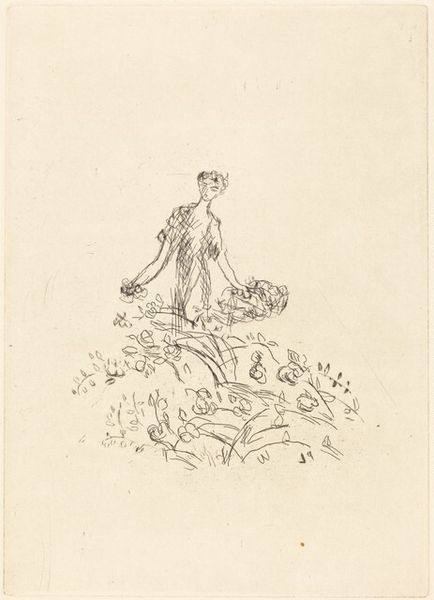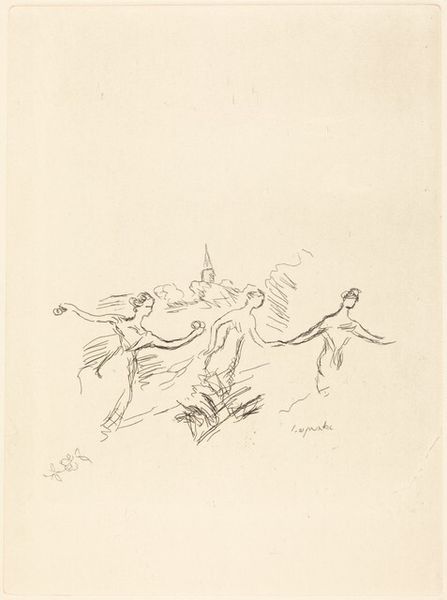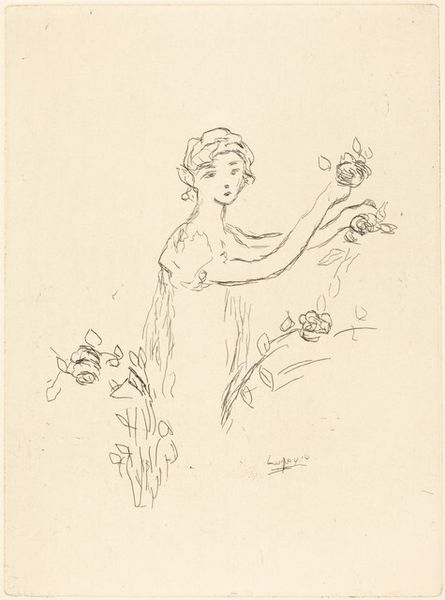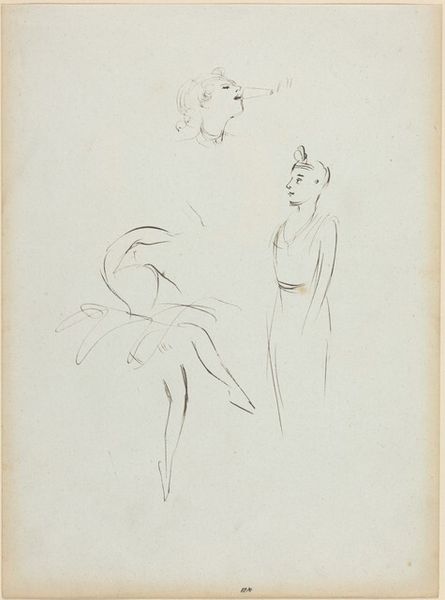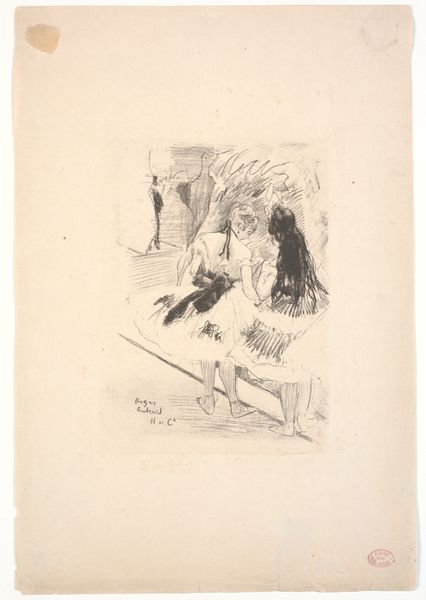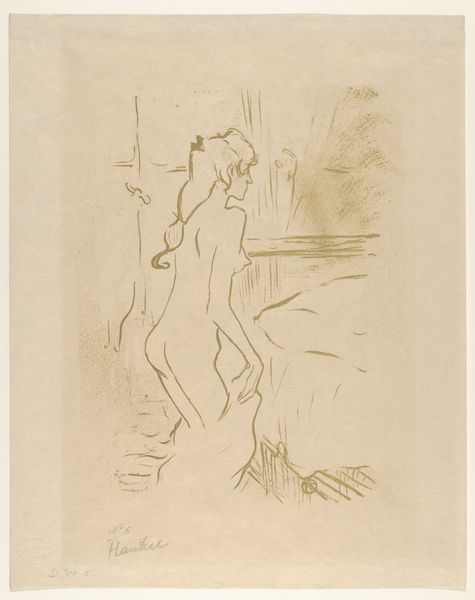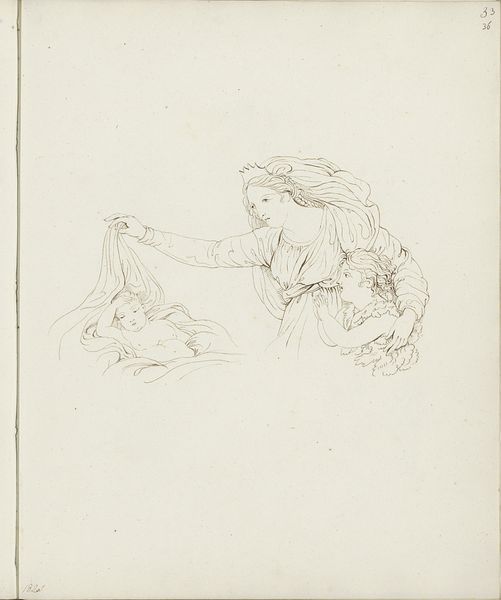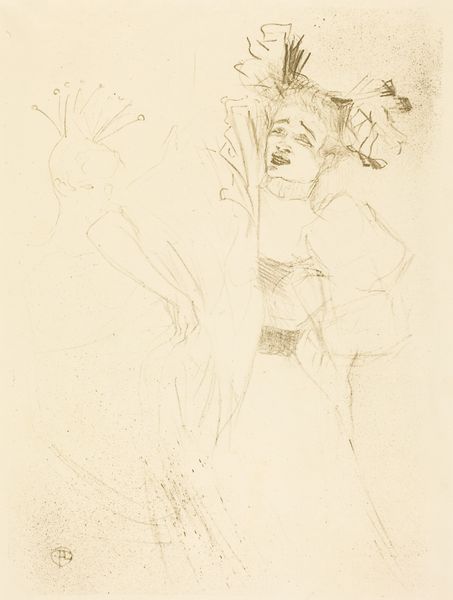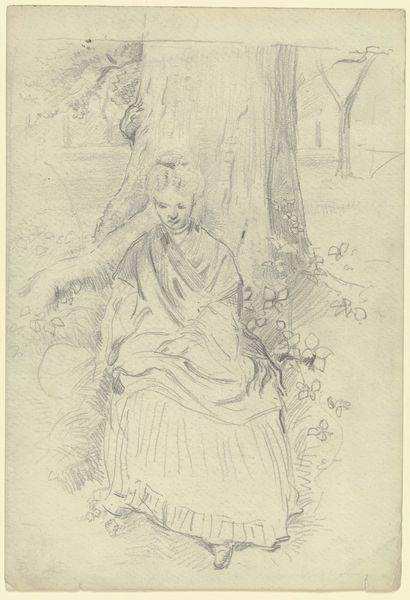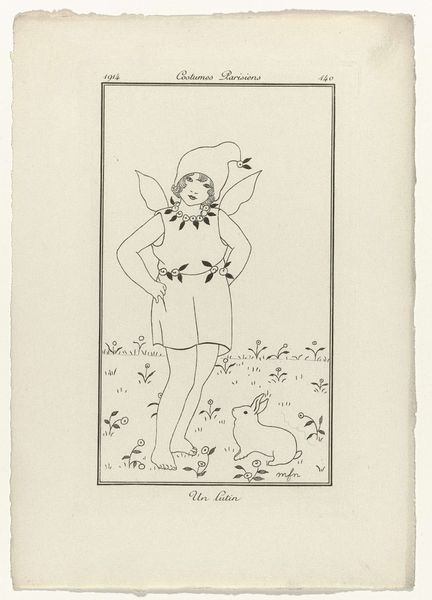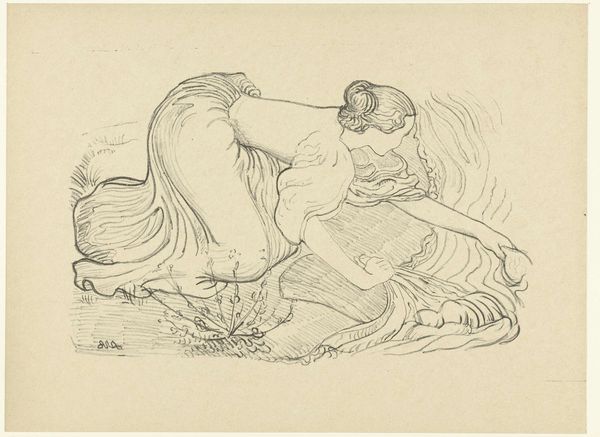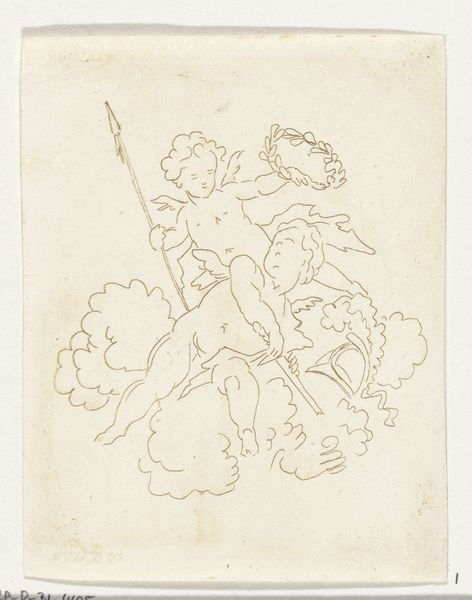
drawing, print, ink
#
drawing
#
ink drawing
# print
#
landscape
#
figuration
#
ink
Copyright: National Gallery of Art: CC0 1.0
Curator: Welcome! Today, we're looking at a drawing by Pierre Laprade titled "Two Women with Flowers in Their Hands." It’s an ink drawing, seemingly a print as well, which makes me wonder about the reproducibility and circulation of such images in his time. Editor: Ah, the first impression is airy, like a half-remembered dream. The linework is so delicate, almost like watching the memory of these figures. Curator: Delicate, yes! Laprade’s choice of ink really gives it a lightness. Think about how ink allows for these fine, quick lines—it's not about heavy detail, but about capturing a fleeting moment. We see that play out beautifully with these figures amidst the garden flora. It really draws you in to consider the material realities of its production and dissemination as an image. Editor: It does. Are they picking flowers? Offering them? I get a distinct feeling of springtime, of new beginnings and gentle exchange. Maybe Laprade sought to express a simple offering here, the giving of nature to each other. Curator: And there’s something subtly radical, wouldn't you say, in choosing everyday moments, the intimate acts and exchanges? Laprade wasn't depicting grand historical scenes, or high society portraits necessarily. Instead, there is something grounded in labor practices in that this image circulated more broadly to a middle-class audience. It redefines what's worthy of artistic representation, which is interesting in thinking about what ink drawings afforded Laprade. Editor: That focus is beautiful. It suggests beauty resides everywhere if we have the eyes to see it—even in these commonplace exchanges, between people or within nature itself. I think the medium becomes part of that. Curator: Right? Laprade's ink doesn't confine; it liberates. The quick gestural strokes evoke that feeling of immediate interaction, drawing us closer to understanding and truly engaging with our social world, no matter the labor. The labor that went into disseminating this image…fascinating! Editor: Yes, so much freedom, like petals on the wind. I come away thinking about ephemerality, really. Thank you. Curator: My pleasure! This exploration makes one appreciate both the moment and what it takes to produce and distribute such a moment as widely as this artist could.
Comments
No comments
Be the first to comment and join the conversation on the ultimate creative platform.
